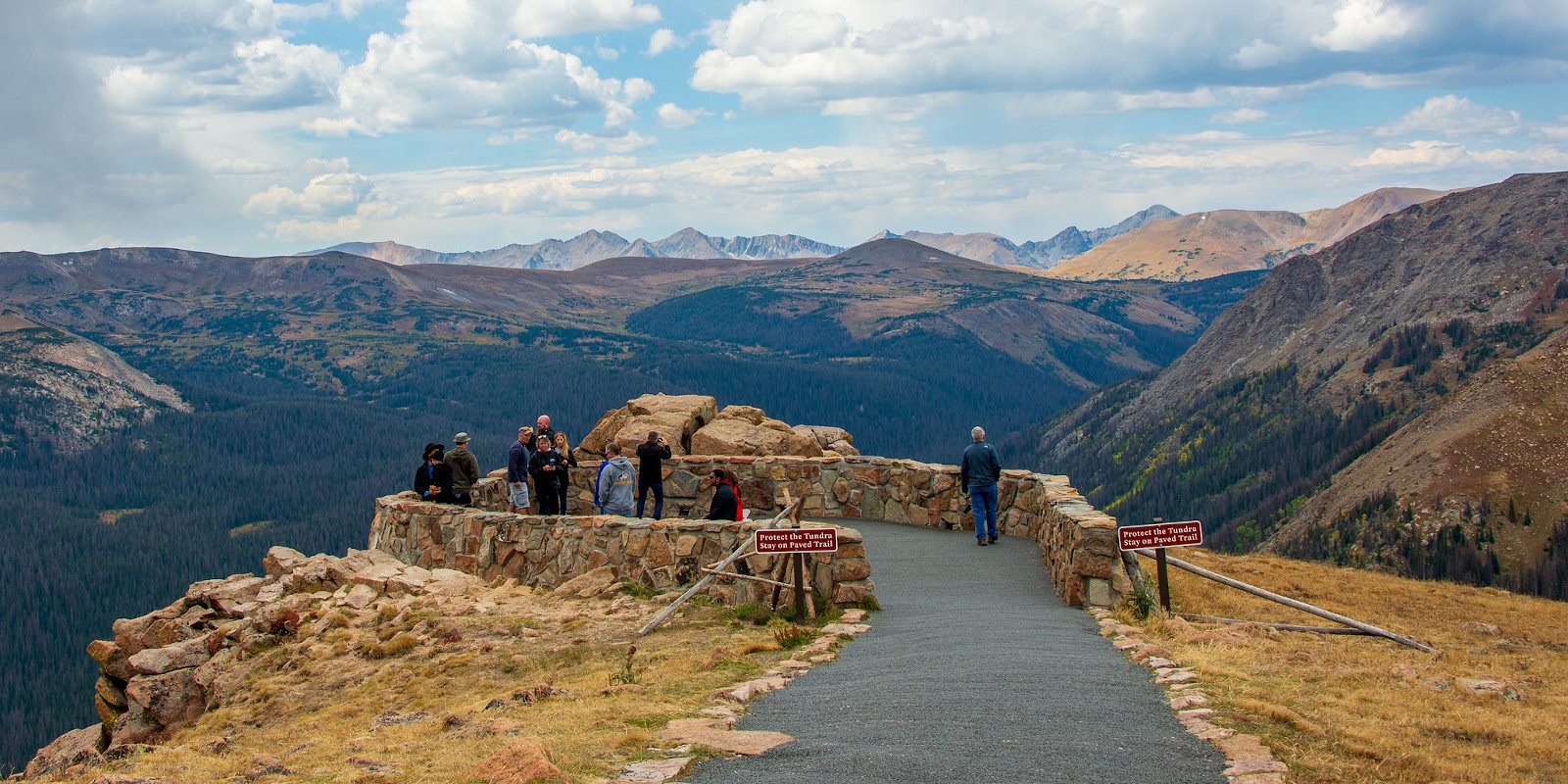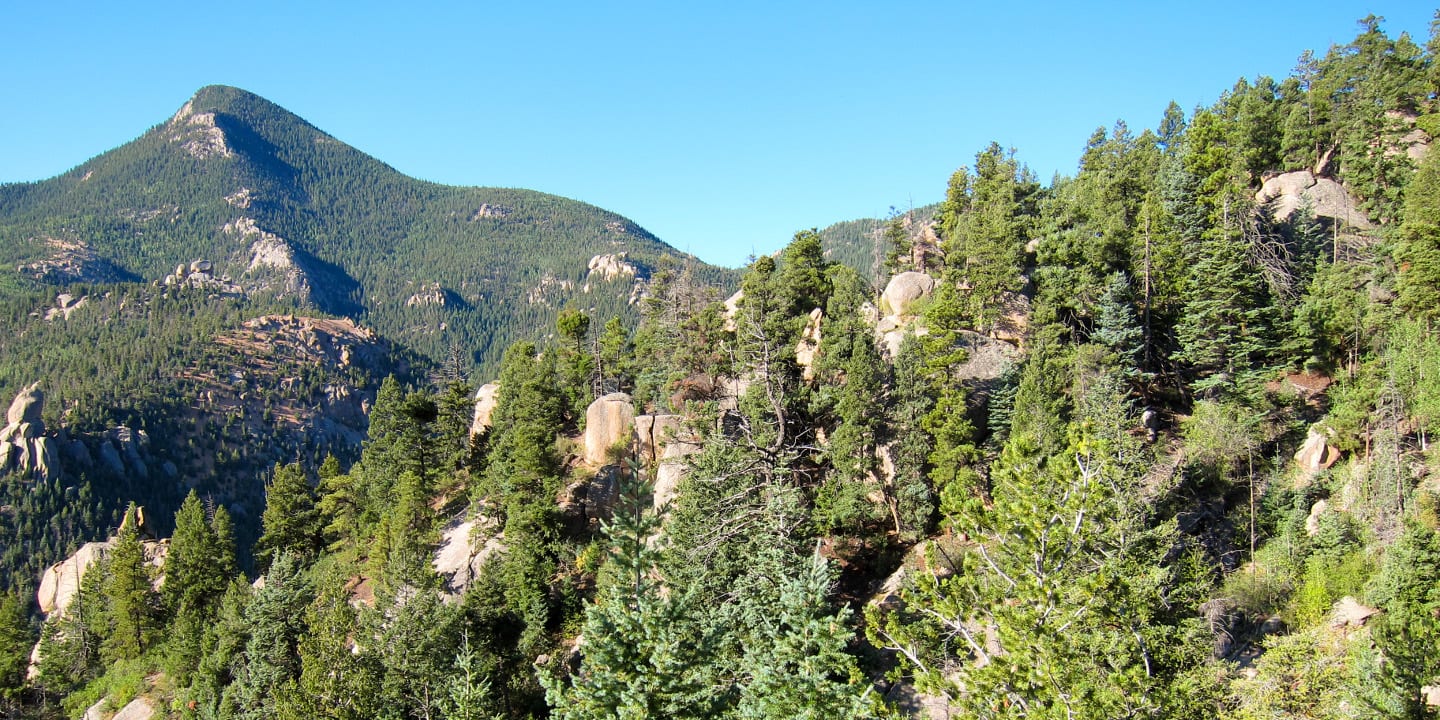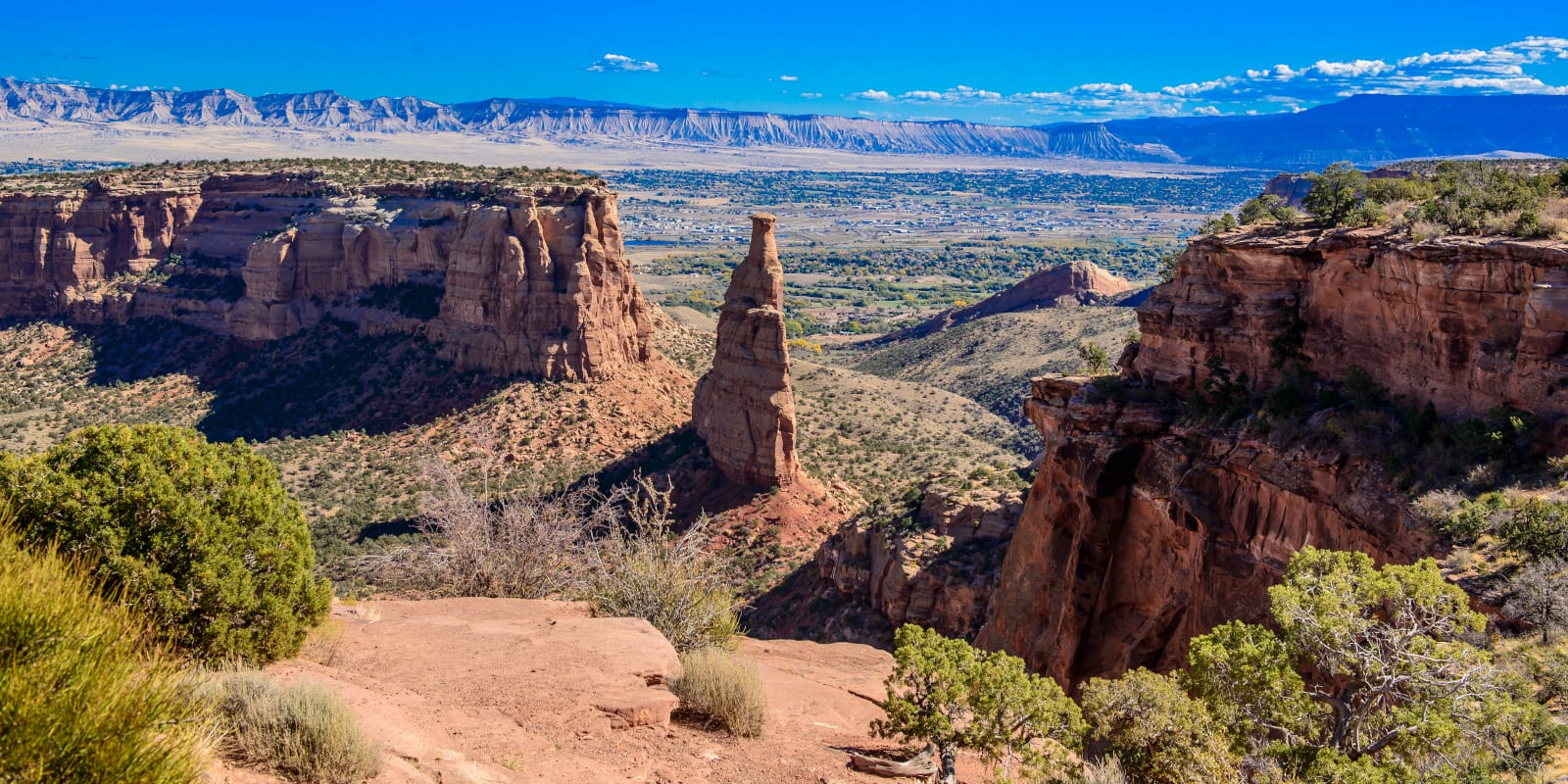Colorado is home to four national parks, each of which is distinct and offers its own unique features of what makes this state so beautiful. From rolling dunes to historic cliff dwellings, there is something exceptional to see at each of Colorado’s national parks.
List of 4 National Parks
Four of Colorado’s biggest gems are preserved in national parks. These 4 signature sites have to be on your local bucket list, as they all offer something unique, from high alpine tundra and steep canyons to cliff dwellings and sand dunes. They all charge fees, however, they also all offer free admission days to those lucky enough to visit during times. View all federal lands.
Map of National Parks
Featured National Parks
Guide to National Parks in Colorado

Four of Colorado’s biggest gems are preserved in national parks. These signature sites have to be on your local bucket list, as they all offer something unique, from high alpine tundra and steep canyons to cliff dwellings and sand dunes.
To be designated a national park, it must meet the following criteria:
- It must possess a unique natural, cultural, or recreational resource.
- It must be in need of protection, and no organization other than the National Park Service would be able to secure adequate protection.
- It must be able to be protected. (It is suitable and feasible to protect the area.)
Here are the four national parks in Colorado, in alphabetical order:
1. Black Canyon of the Gunnison National Park

As one of the nation’s least-visited national parks (only seeing 308,962 visitors in 2018), the Black Canyon of the Gunnison is not for the faint of heart. Unlike other major national parks like Yellowstone or Zion, the Black Canyon offers minimal infrastructure and accessibility. But with that, visitors can expect fewer people, no lines, and fewer selfie sticks.
As the state’s deepest canyon, rising over 2,000 feet above the Gunnison River (with its deepest section at 2,722 feet at Warner Point on the south rim), the Black (as locals call it) is also home to the highest cliff in Colorado, The Painted Wall, and reaches its narrowest point of 40 feet in width at The Narrows.
The park spans 32,950 acres, nearly half of which is federally designated wilderness. The total length of the canyon stretches 53 miles with distinct areas of the North and South rim. The south rim sits at an elevation of 8,320 feet and is the most populated and frequented part of the park. With 12 canyon overlooks, those who do not dare enter the canyon can still get an appreciation of its magnitude and beauty.
The north rim is less frequent and offers limited services with only one small ranger station offering only essential park information. Accessing the North Rim requires driving on a dirt road but is pleasantly smooth and easily accessed.
Park highlights
Popular highlights of the park include the scenic drive around the perimeter of the canyon, hiking the one-mile Rim Rock Nature Trail, photographing the painted wall, fishing the gold medal waters of the Gunnison River, or boating down the river via the Curecanti National Recreation Center’s ranger-led boat tours.
Activities in the park
There are plenty of outdoor recreation opportunities including boating, fishing, hiking, horseback riding, kayaking, climbing, wildlife viewing, and whitewater rafting. Rock climbing and kayaking in the Black is epic and is only recommended for experts. If you do plan to spend time in the inner canyon, note that there are no marked trails and an abundance of poison ivy that is nearly impossible to avoid.
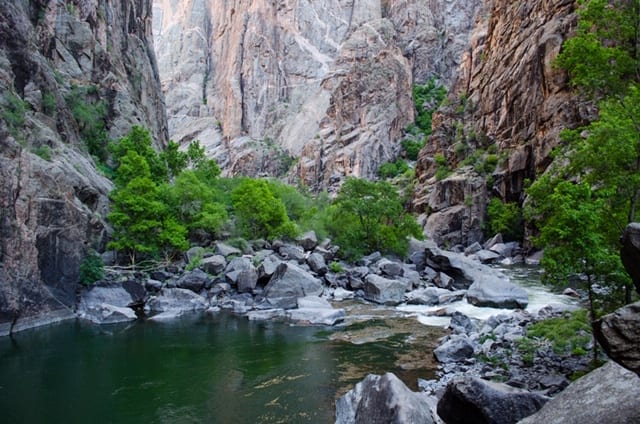
Camping
The south rim offers 88 campsites with electric hookups and RV accessibility. Some of the sites are reservable. The north rim offers 13 campsites with no electric hookups, but RVs are still allowed, campsites are not reservable. The east portal entrance also offers 15 campsites on a first come first serve basis. Each campground offers toilet facilities, picnic tables, and campfire rings.
Weather
Weather in the Black varies greatly, with a 120 approximate temperature range. Summer temperatures can reach 100+ degrees, while winter can bring in negative 20 degrees.
Getting there
The park offers two entrances via the south rim and north rim. The south rim is accessed by the east portal along US 50 via Highway 347, 13 miles east of Montrose. This entrance is open year-round with the visitor center open every day except major holidays. The north rim is 11 miles southwest of Crawford from Highway 92, with the last 7 miles unpaved ,and is closed in the winter.
There is no bridge across the canyon. Allow two to three hours to drive from one side of the canyon to the other.
2. Great Sand Dunes National Park

Home to the world’s tallest sand dune, the Great Sand Dunes National Park is a truly unique experience and one that should be on every Colorado bucket list. Nestled against the awe-inspiring peaks of the Sangre de Cristo mountains in southern Colorado, the dunes have been growing and sifting for ages – always changing and yet never losing their sense of wonder. The dune field spans 30 square miles with the tallest dune, the Star Dune, rising 750 feet high at an elevation of 13,604 feet.
Park highlights
Without really any designated trails, one of the best ways to explore the dunes is by sledding down the sand, or if you don’t have a sled a simple plunge into the soft sand will do just fine! Sledding is the most fun from the top of the tallest dune. If you happen to be visiting in the spring (mid to late May) be sure to splash around in one of Colorado’s beaches at Medano Creek. The creek runs along the dunes and in the spring after melting snow makes its way down to the stream making it flow much higher and faster – perfect for a day at the beach.
Activities in the park
Aside from exploring the dunes, you will find areas for picnicking, some hiking, and camping available. Another great way to explore the park is to rent a (or if you own) a 4WD vehicle and explore some of the park’s more remote parts. Also, be sure to stay up late to photograph or simply admire the night sky. As an International Dark Sky Park, it is the perfect time to stay up past your bedtime.
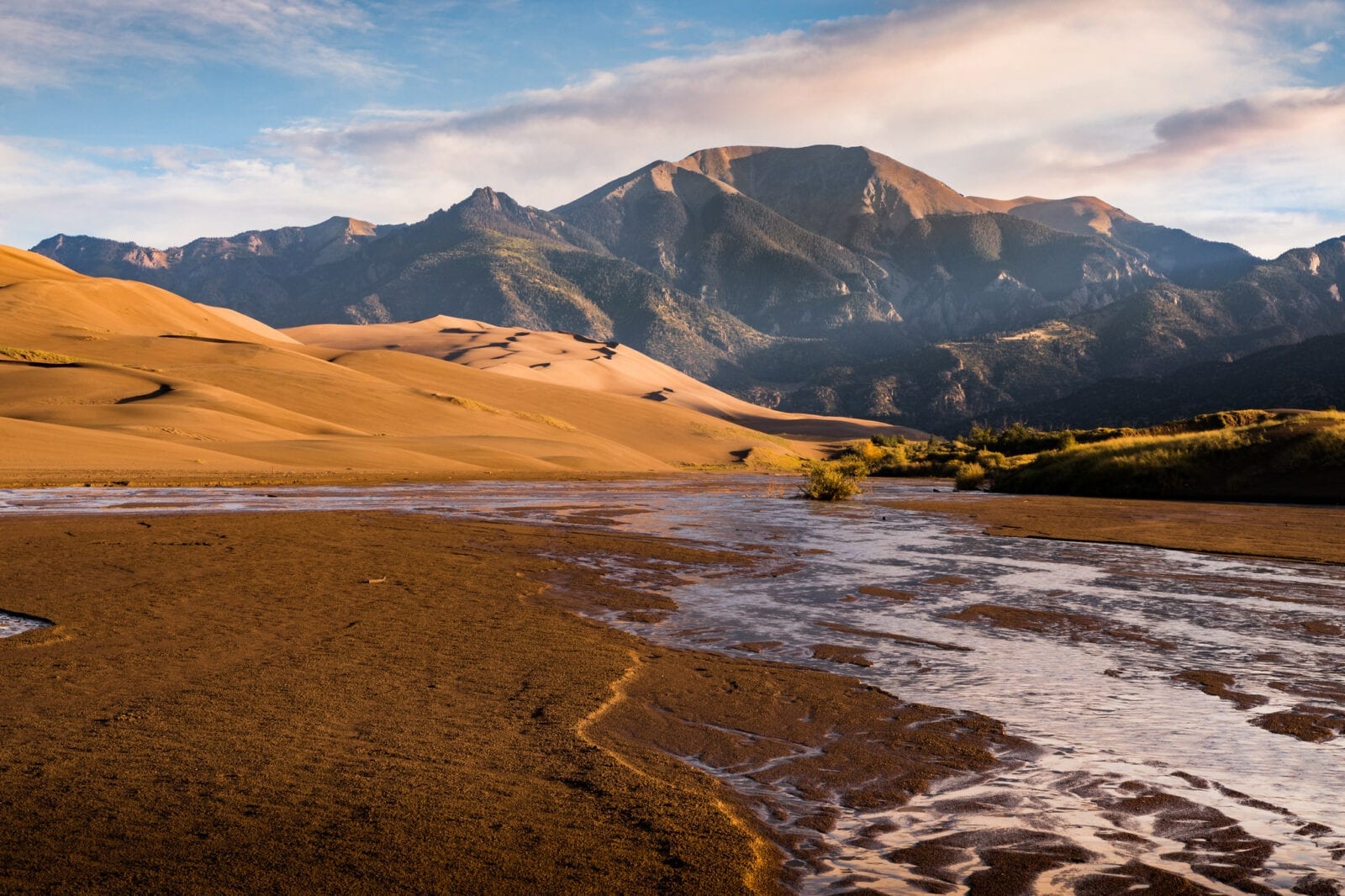
Camping
There are several camping options in the area. The Pinon Flats campground offers 44 sites that are on a first-come, first-serve basis. For those exploring a bit further into the park, there are 21 campsites available along the Medano Pass Road, on a first-come, first-serve basis as well. And for those who seek a bit more adventure, free backcountry permits are available to pitch a tent anywhere within the park’s boundaries.
Lodging
If hiking through the sand to get to a campsite doesn’t sound fun, there are several lodging options nearby. The Great Sand Dunes Lodge offers seasonal accommodations just south of the main entrance to the park. For more rustic rooms try the Oasis Camping Cabins or even the Oasis Duplex Motel.
Weather
Average temperatures tend to stay fairly cool throughout the year. But the sand surface stays hot during sunny summer days. Winter days are cold with plenty of sunshine, while summer is hot with temperatures in the 70s and 80s but fall makes for a perfect time to go with mild temps and cool nights.
Getting there
To access the main park area, take Highway 150 from the south or County Road 6 from the west – 34 miles northwest of Alamosa.
3. Mesa Verde National Park

For history and scenic beauty visit Colorado’s Mesa Verde National Park. As one of the richest and wmost ell-preserved archeological areas in the US, Mesa Verde is home to more than 5,000 archeological sites, 600 of which are cliff dwellings that visitors can visit up close, walkthrough, or admire from afar. In recognition of its exceptional historic and archeological relevance, the park was named a UNESCO World Heritage Site in 1978.
The park’s main attraction is the many cliff dwellings that still stand after 100s of years. The Mesa Verde Cliff Dwellings are some of the most well-preserved archeological sites in the US Ancestral Puebloans built their homes beneath the overhanging cliffs in the late 1190s. The structures range from small one-bedroom homes to villages of more than 150 rooms.
Park highlights
Some of the must-dos in the park include a guided tour to Cliff Palace and Balcony House, visit the Chapin Mesa Archeological Museum, keep your eye out for petroglyphs, drive the Mesa Top Loop Road for a chance to view the cliffs from the rim, and step back even further in time with a visit to the Far View Sites – where the Ancestral Puebloans lived before they moved to the cliffs.
Activities in the park
The main activity in the park is hiking. There are several self-guided hiking trails, but most require a guide to see the cliff dwellings. To see the popular Cliff Palace, Balcony House, and Long House you must purchase a ticket for a ranger-guided tour. Other cultural sites including Far View Sites Complex, Cedar Tree Tower, Step House, and the Badger House trail can all be accessed via a self-guided tour. Tickets can be purchased at the Mesa Verde Visitor Center.
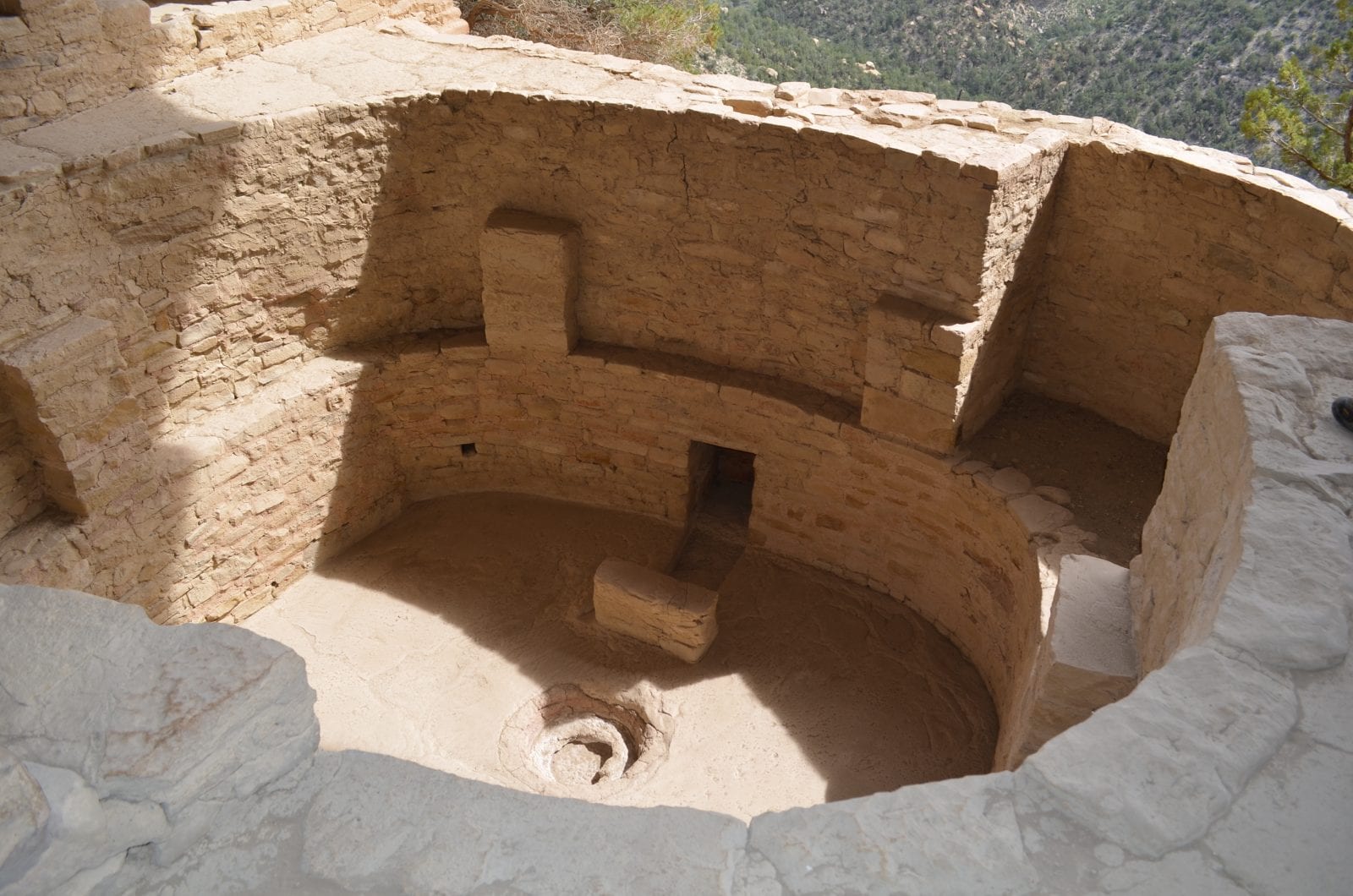
Camping
Visitors will find camping at the Morefield Campground, located four and a half miles from the entrance. The site offers 267 campsites in a beautifully wooded canyon. Campsites include a fire pit and/or BBQ grill, picnic tables, with convenient access to firewood, food, and camp supplies, plus potable water. Both tent and RV sites are available. Reservations are accepted but not required.
Lodging
If you aren’t looking to camp, the park offers one hotel – the Fair View Lodge. Located 15 miles from the entrance, the hotel is open April through October. Its western décor, stunning views, and delicious dining make this a great option for those who prefer a bed vs. a tent. If you choose not to stay in the park, the closest lodging options are found in the nearby town of Cortez.
Dining
The park houses four different dining options including the Metate Room, Far View Terrace Café, Far View Lounge, and the Spruce Tree Terrace Café.
Weather
Weather at the park is typically more on the mild side. Between 6,500 to 8,500 feet in elevation, temperatures range from the high 30s in the winter and mid-80s in the summer. Evenings cool off quickly so layers, no matter what time of year, are recommended.
Getting there
The park entrance is along HWY 160 between the towns of Mancos and Cortez, in Colorado’s southwestern corner of the state. Do note, once in the park, the first cliff dwelling is 21 miles inside the park. The Mesa Verde Visitor and Research Center is located at the main entrance to the park.
4. Rocky Mountain National Park

As the most popular national park in Colorado (seeing 4.5 million visitors in 2108), Rocky Mountain National Park is home to majestic mountain tops, abundant wildlife, wildflowers, and scenic landscapes, all showcasing Colorado at its best. Stretching across the Continental Divide, the park spans 265, 770, all of which are accessible via the park’s 300 miles of hiking trails and a 164-mile scenic loop.
Park highlights
Popular highlights of the park include hiking Nymph Lake, Bear Lake, and Emerald Lakes, a drive along Trail Ridge Road, watching herds of elk in Moraine Park, and of course, enjoying the beautiful scenery that greets you at every corner.
Activities in the park
There is a wide range of activities available within the park. From fun for the whole family to adventure seekers, the park offers something for everyone. Choose from hiking, backpacking, climbing, camping, hunting, fishing, and more.
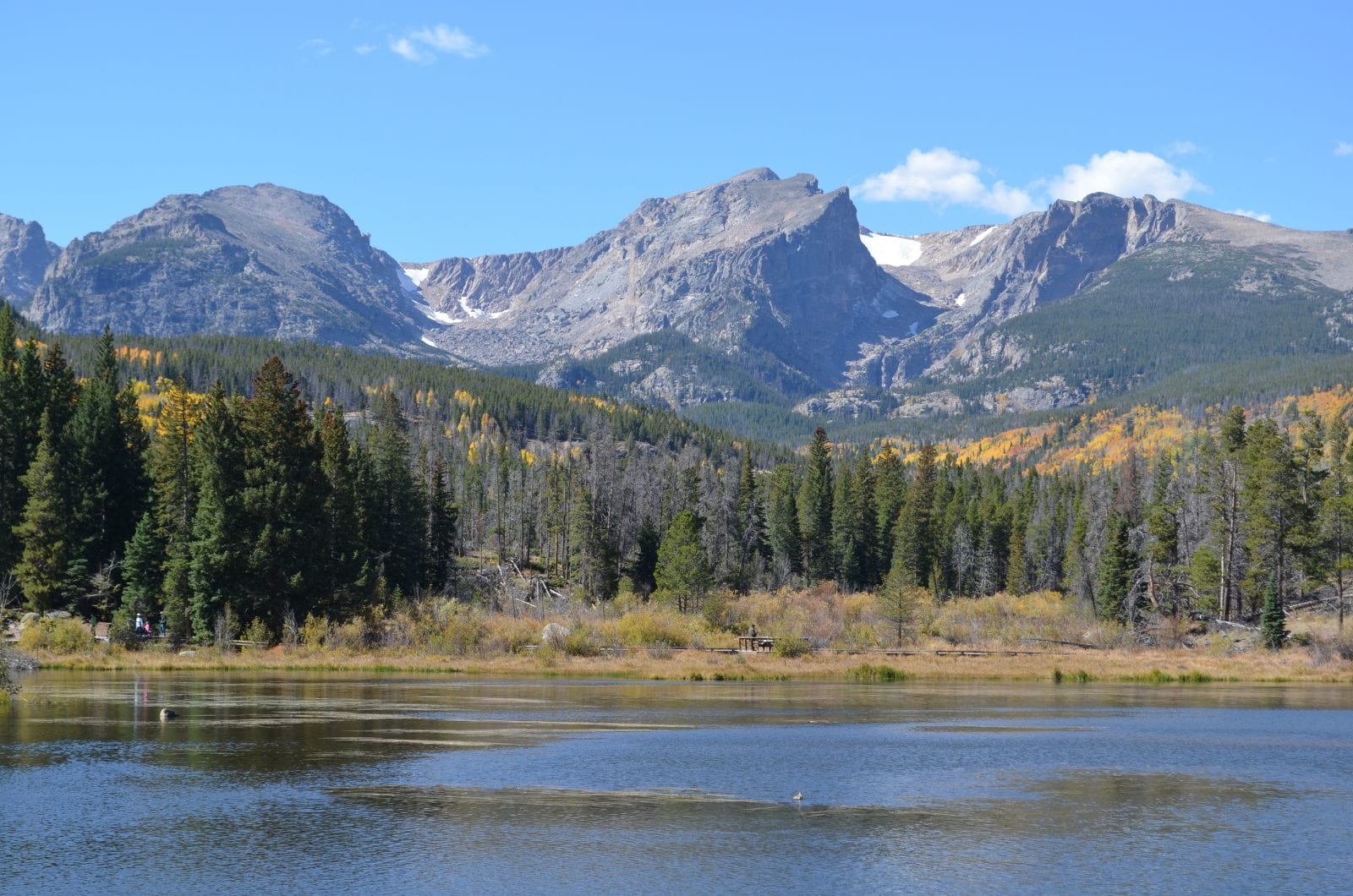
Camping
Camping in Rocky Mountain National Park is one of the most popular activities to do in the park. With a plethora of reservable, first-come, first-serve, and backcountry camping opportunities there is something for everyone. The Aspenglen, Glacier Basin, and Moraine Park campgrounds are all can be reserved. The Longs Peak and Timber Creek campgrounds are both first-come, first-serve. All campsites are seasonal and open for the summer season.
Lodging
While there is no lodging within the park, there are plenty of options in the nearby towns of Estes Park and Grand Lake.
Weather
Weather in Rocky Mountain National Park varies, with summers offering temperatures around the 70s and 80s, with lows in the 40s. Winters, depending on elevation, can reach as low as -35 degrees with average daytime temperatures in the 30s.
Getting there
There are four entrances to access the park. Three entrances reside on the east side, while one is located on the west side. For the most direct access from Estes Park, head to the Beaver Meadows entrance. To avoid the crowds entering from Estes Park, head to the Wild Basin entrance, about 30 minutes south of town. The Grand Lake entrance is the only entrance on the park’s west side and is one that is less frequented but may be one of the best options.
These parks are just a portion of the 1/3 of Colorado land that’s federally owned, such as national forests and BLM land open to public use. As you plan your trip to these Colorado national parks be sure to always check their websites for the latest updates and happenings. Happy trails!






